African American and Hispanic seniors are very under represented among top-scoring students on the SAT. |
While Figure 2 shows the percentage of students attaining SAT scores above the 1999 national average among the 1997 through 1999 data, Figure 3 (below) provides more detail about the distribution of scores throughout the entire range of the SAT scale. The large racial/ethnic group differences among means translate into very skewed differences in racial/ethnic group representation at the extremes of the SAT scale ranges. For example, in the Class of 2000 only 7 percent of the African American seniors attained SAT scores within the range of many selective colleges and universities (above 1200) whereas 41 percent of white seniors and 39 percent of Asian seniors attained SAT scores in that range. A score of 1205 corresponds to the median SAT Total score among first year entering students at the University of Maryland, College Park campus.
Academic support is needed to bring more African American and Hispanic students into rigorous programs, and to support those who are already pursuing advanced course-work. Recent studies2 have shown that high achieving African American high school students tend to attain lower grades when in college than do their white counterparts who graduated from high school with the same scores. Thus, the need for academic support sustained throughout the range of school performance is important.
2 Cota-Robles, Eugene H. and Gordon, Edmund W. 1999 Reaching the Top: A Report of the National Task Force on Minority High Achievement. New York:The College Board, (p.8).
Figure 3
Racial/Ethnic Group Differences in the Distribution of SAT Scores for the Class of 2000
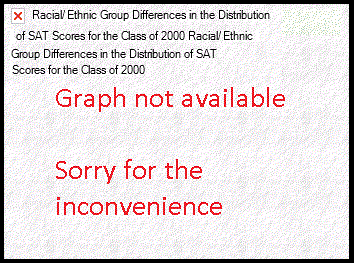 |
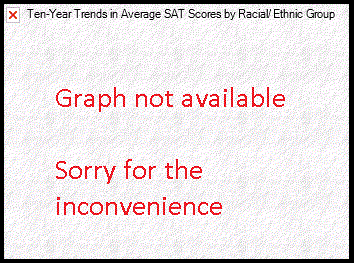
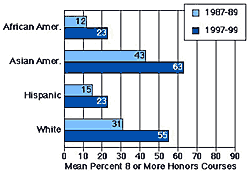
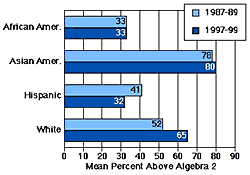
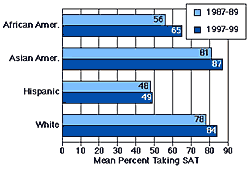
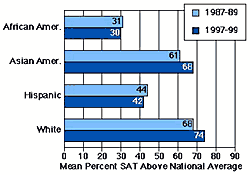

![[Navigation Buttons]](gr/smallbanner.gif)
![[MCPS Web Home]](gr/MCPSweb.gif)